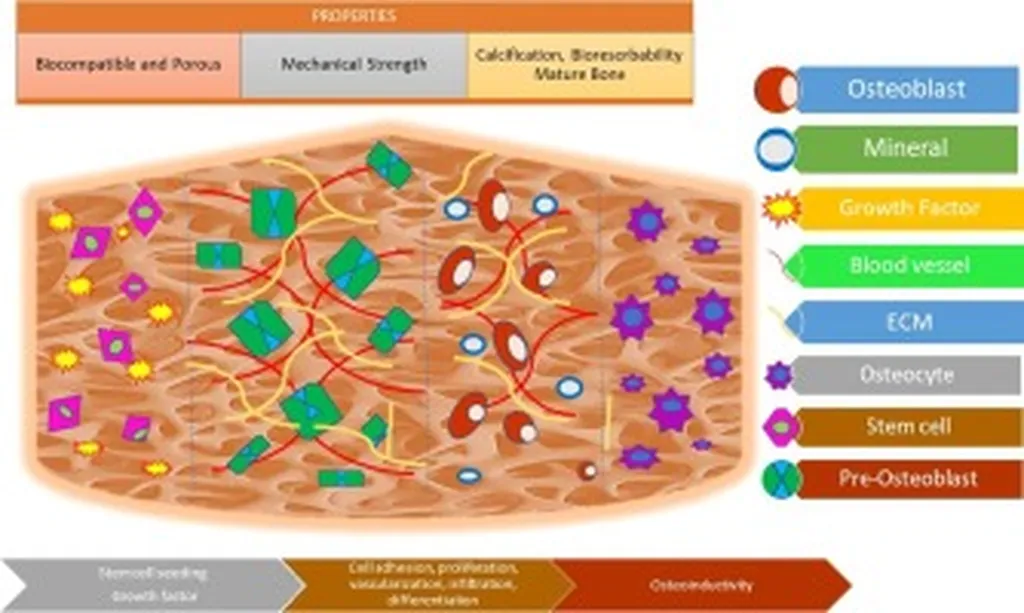In the realm of bone defect reconstruction, a groundbreaking material is making waves, promising to revolutionize the way we approach bone regeneration. Bioactive glass, a cutting-edge material for artificial bone, is at the forefront of this medical evolution. A recent review published in *Materials Today Advances* (translated to English as *Advances in Materials Today*), led by Huayue Hu from the Department of Orthopedics at Xinhua Hospital Affiliated to Shanghai Jiao Tong University School of Medicine, sheds light on the remarkable potential of bioactive glass in bone tissue regeneration and repair.
Bioactive glass is not just another material; it’s a multifunctional marvel. Its biocompatibility, osteoconductivity, and osteoinductivity make it an excellent candidate for bone tissue engineering. But what sets it apart is its versatility. “The multifunctionality of bioactive glass materials is attributed to advances in composition optimization, structural design, and preparation techniques,” explains Hu. This means that bioactive glass can be tailored to meet specific medical needs, from enhancing bone regeneration to delivering drugs and fighting infections.
The secret to bioactive glass’s success lies in its composition and design. By doping it with metal ions like Mn, Cu, Zn, and Ce, researchers can imbue it with antibacterial, anti-inflammatory, and drug-delivery capabilities. Moreover, chemical modifications, such as composites with artificial bone materials, the addition of polysaccharides and proteins, or the integration of hydrogels, further expand its biomedical potential.
But how does bioactive glass work its magic? The review delves into the mechanisms through which bioactive glass supports bone regeneration. It regulates the local microenvironment, promotes osteogenesis (the formation of new bone), and enhances angiogenesis (the formation of new blood vessels). This trifecta of effects makes bioactive glass a powerful tool in treating bone defects caused by fractures, infections, osteoporosis, and even bone tumors.
The implications of this research are vast, not just for the medical field but also for the energy sector. As we strive for safer and more efficient solutions in precision medicine, materials like bioactive glass could pave the way for personalized, intelligent, and multifunctional applications. “With interdisciplinary research, bioactive glass is expected to bridge basic research and clinical use,” says Hu, highlighting the potential of this material to transform bone tissue repair and regenerative medicine.
In the future, we might see bioactive glass-based implants that are not only precise and efficient but also tailored to the individual needs of patients. This could lead to faster recovery times, reduced complications, and improved quality of life for those suffering from bone defects. Moreover, the principles behind bioactive glass’s success could inspire innovations in other fields, including energy storage and conversion, where similar materials could be used to enhance performance and efficiency.
As we stand on the brink of a new era in bone regeneration, one thing is clear: bioactive glass is a material to watch. With its unique properties and vast potential, it’s poised to make a significant impact on the medical field and beyond. And as Hu and his team continue to push the boundaries of what’s possible, we can expect even more exciting developments in the years to come. So, keep an eye on bioactive glass—it’s not just a material, it’s a revolution in the making.

